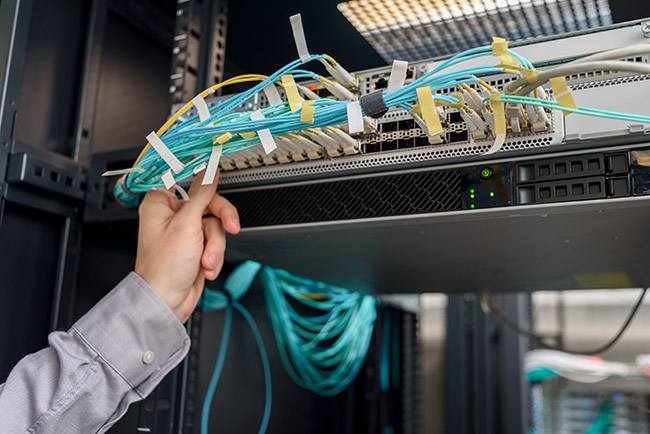
Why You Should Upgrade to Windows 11 Now – Part 2
December 30, 2022
Configuring Your New Office’s Wi-Fi Network – Part 2
January 9, 2023The number of wireless devices has grown rapidly over the past few years. These include desktops, laptops, smartphones, tablets, and warehouse barcode scanners. At some facilities, installing an Ethernet cable is either impractical or very difficult. In contrast, Wi-Fi can cover large spaces, including auditoriums, lecture halls, stadiums, and warehouses, and provide internet services without Ethernet cabling.
When properly installed and configured, Wi-Fi will enable staff to go from one location to another within a facility, transitioning from one area to another without missing a beat. This is critical for healthcare facilities where highly mobile physicians and nurses must also have strong network security to ensure that personal and sensitive data remains secure for patients and their family members. A solid Wi-Fi network can also support location tracking, which uses devices to locate personnel and valuable or critically needed equipment.
Basics of Wi-Fi Interference
It is important to initially point out that Wi-Fi can be vulnerable to EMI (electromagnetic interference). Examples of sources of EMI are access points (APs), hot spots, microwave ovens, smart TVs, and wireless cameras.
The Wi-Fi protocol handles transmissions individually. If a channel is busy, rendering it unavailable, then an AP or endpoint will delay transmitting until the channel becomes open. Sources of interference will decrease opportunities for transmission, resulting in delays in communication.
Being a shared transmission medium, a Wi-Fi network’s capacity will be distributed among all devices connected to one access point. Fortunately, newer APs and endpoints can support MIMO (multiple input, multiple outputs), which gives several devices the ability to communicate simultaneously. MIMO is helpful unless an external source of interference blocks every channel.
Network Design and Capability
The design of a Wi-Fi network should factor in the maximum estimate of how many connected devices will be online simultaneously. Most access points can support 35 devices simultaneously at an acceptable performance level. Thus, deployments in high-density areas like shopping malls will require specialized configurations. Through directional antennas, APs can better handle challenging coverage demands.
Part 2 will cover Site Survey, Professional Installation, Network Operation Validation, and Various Best Practices.
Alpha Business Support
Choosing an expert computer technical support provider is important for your business. Alpha has been a trusted partner of many companies in the Washington, D.C., Baltimore, and Annapolis areas since 1990. For affordable client-focused network consulting services and solutions, please call Alpha today at (410) 295-9500.




